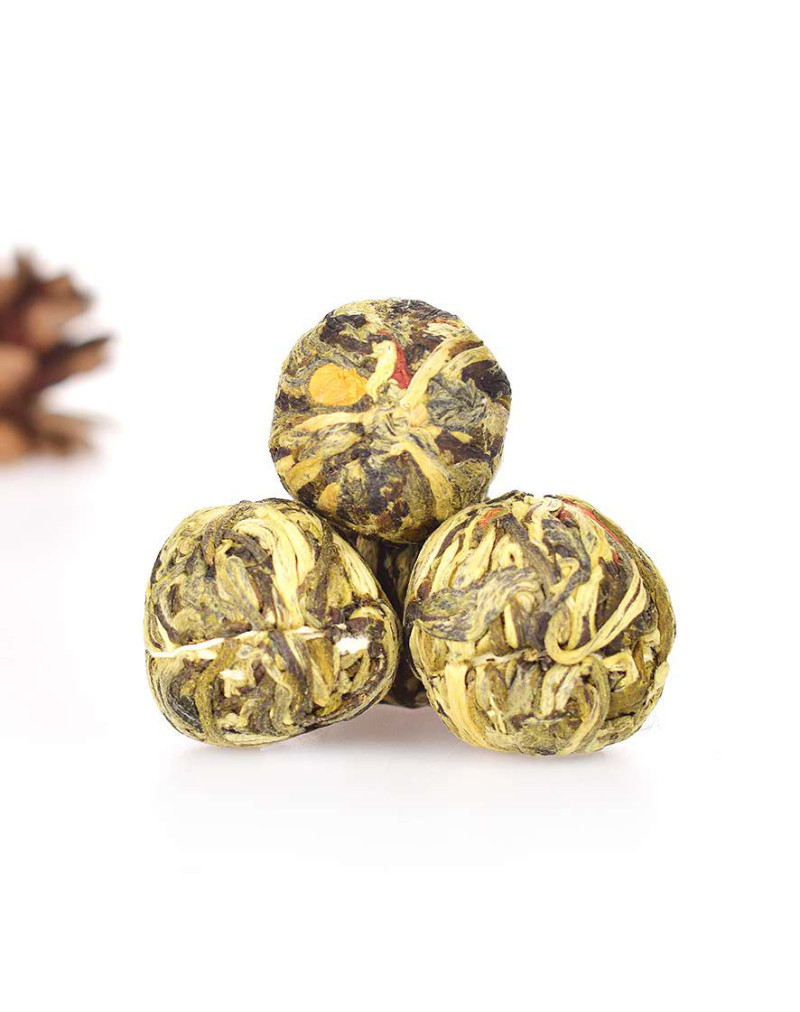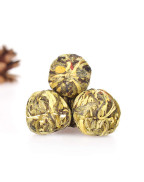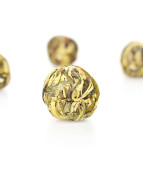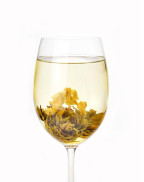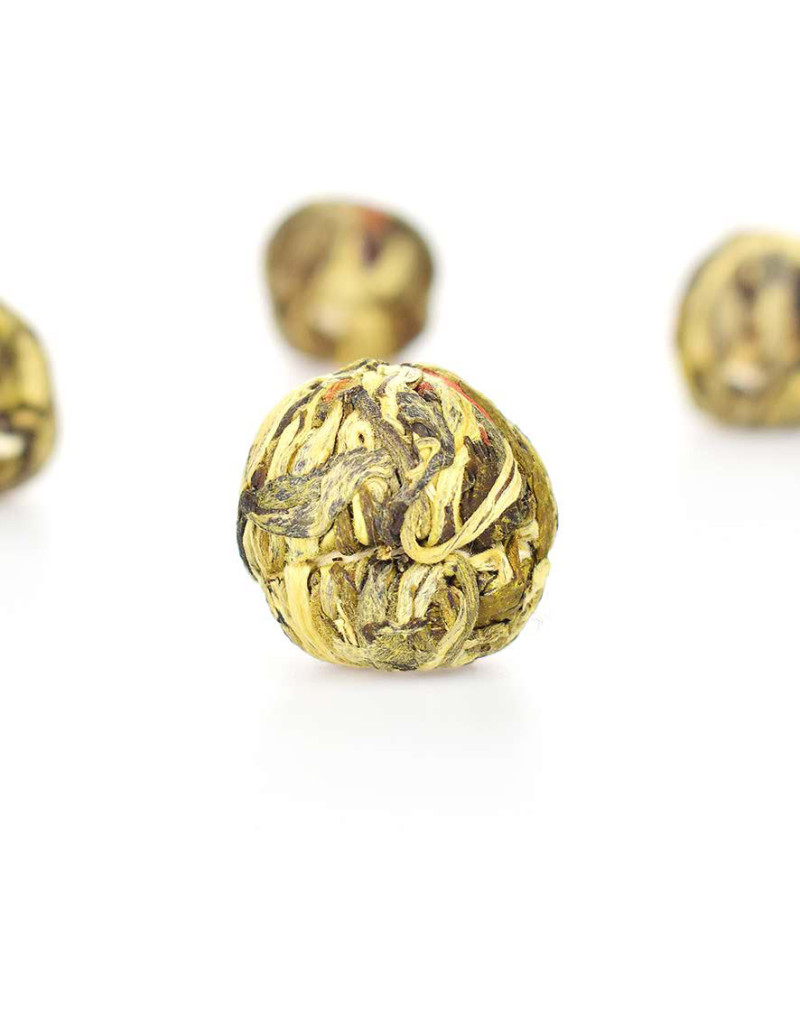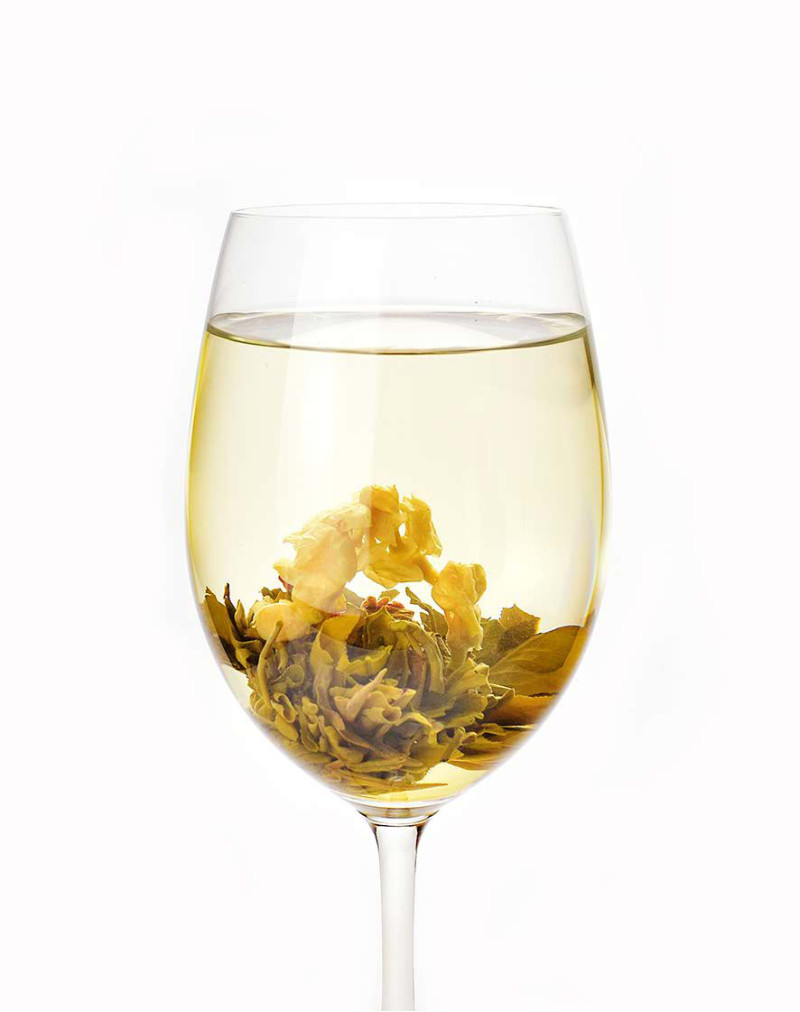Lily Basket Blooming Tea
- Product Code: simple
- Availability: In Stock
Basic Info
Name: Lily Basket Blooming Tea
Category: Blooming tea
Origin: Ningde City, Fujian Province
Taste & Aroma: refreshing, fragrant, light aftertaste, tea flavor
Liquor: yellowish,clear and bright
Harvest Period: Summer 2023
Item Form: tea ball
Ingredients: Yinzhen green tea,lily,jasmine
Shelf Life: 18 months
Storage: stored in cool, airtight, opaque containers
Flavor: unflavored
Caffeine: Low
Lily Basket Blooming Tea
Also konwn as flower tea or craft tea, blooming tea is also a kind of scented tea, but compared with ordinary scented tea, blooming tea is more ornamental and artistic. It is made by sewing edible dried flowers flower on tea buds base to shape a small tea ball, melting with tea's fragrance and flowers' beauty. Some flowers that are often used to make blooming tea are carnations, marigold, Calendula, jasmine,Osmanhtus ,etc. Pouring boiling water into the glass and waiting for one or two minutes and you will see the round tea ball blossom out beautifully. It is so natural, healthy, and fashionable. Blooming tea can not only satisfy your taste, but also let you enjoy an artistic performance of flowers and tea in a glass. Therefore, some people say that Blooming tea is an art of tea and flowers.
Roses originated in northern China and are often cultivated in courtyards or gardens as ornamental flowers. It is now cultivated all over China.
There are two rose tea producing areas in China:
Mengding Mountain is located in the western edge of the Sichuan Basin, the transition zone from the Qinghai-Tibet Plateau to the western Sichuan plain, between the so-called "rain city" Ya 'an city and Mingshan City. Mengding Mountain is shrouded in mist all year round, with many high mountains and perilous peaks, and many waterfalls.Mengding Mountain and the surrounding areas are very suitable for the growth of high-quality tea.
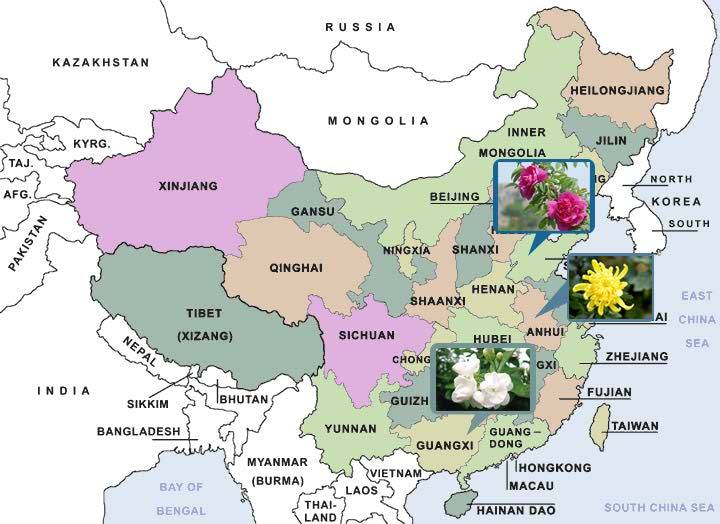
Roses are native to the north of China. Roses are grown in some courtyards and gardens in China for both ornamental and edible use. Now roses are cultivated all over China, mainly produced in Jiangsu, Zhejiang, Fujian, Shandong, Sichuan, Hebei and other places in China.
In general, there are two major rose production areas in China:
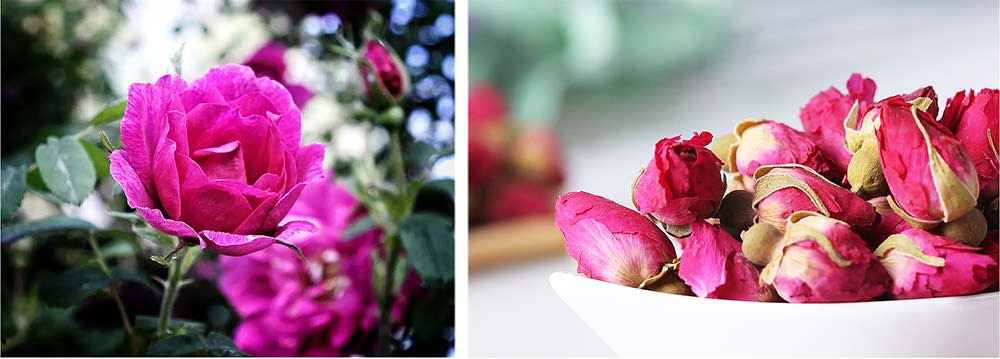
Show Full Description
Pingyin County, Shandong Province: people began to plant roses in Pingyin more than 2000 years ago. The main characteristics of "Pingyin rose" are strong fragrance, large petals and bright colors, which are so loved by many people. The roses we use to make the blooming tea come from Pingyin County, Shandong Province.
Yongdeng, Gansu Province: there is the largest rose planting base in China. The output of roses named "bitter water"
in the county accounts for more than 50% of the total output in China, so it is also called "hometown of bitter
water roses" in China.
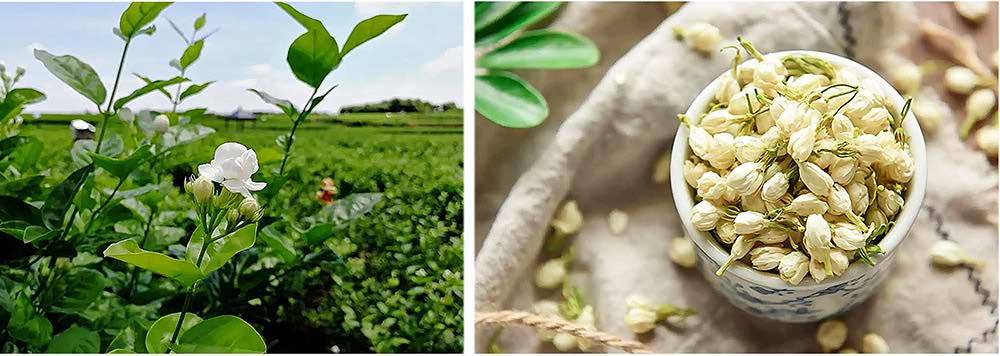
Chrysanthemum: chrysanthemum is one of the top-ten famous flowers in China, which can be seen almost everywhere in China. Chrysanthemum originated in China and has a cultivation history of more than 2500 years. With more than 3000 varieties, it is the most widely planted traditional famous flower in China. In addition to being used for garden appreciation, medicinal Chrysanthemum and tea chrysanthemum account for a large proportion. According to records, people in the Tang Dynasty began to drink chrysanthemum tea, because it is believed to have medicinal effects such as lowering blood pressure, protecting eyesight and refreshing.
Jasmine: native to India, it is now widely cultivated in southern China and around the world. Hengxian County, Guangxi is the largest jasmine tea production base in China, and is named the "hometown of jasmine" by the State Forestry Administration of China.Guangxi jasmine tea is well-known in China. The county has a long history of planting jasmine, which is said to have a history of six or seven hundred years. Jasmine is often used to make scenting tea. According to traditional Chinese medicine theory, jasmine is good for the liver and vision, and can also delay aging. So jasmine is also used in traditional Chinese medicine. Hengxian jasmine is characterized by early picking time, long harvest season, large flower buds, high yield and strong fragrance. The jasmine used to make this blooming tea comes from Hengxian County.
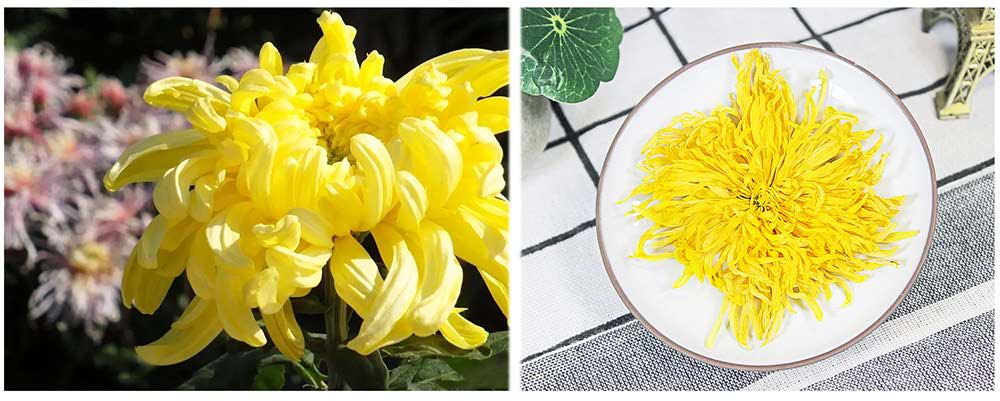
Lilies grow on hillsides at an altitude of 300-920 meters. In some parts of China, it can be found in grass, woods, valleys, cultivated land or places near villages, and can also be cultivated artificially. It is mainly distributed in Hebei, Shanxi, Henan, Shaanxi, Hubei, Hunan, Jiangxi, Anhui and Zhejiang in China.Lily is a kind of health food and common Chinese medicine, and can also be planted as an ornamental flower in the garden. The flowers of lilies contain aromatic oils and can be used as spices, while the bulbs are rich in starch, so they can be used as food.Lily is rich in protein, fat, reducing sugar, calcium, phosphorus, iron, vitamin B, vitamin C and other nutrients, as well as some special nutrients, such as colchicine and other alkaloids. It has a good nutritional and nourishing effect on the human body, so it is very beneficial to make delicious food. Lily can be used fresh or dry. Lily is China's traditional export specialty.

Steps for making blooming tea
1. Now wet the dried tea and dried flowers used to make "blooming" tea
2.Making the base of blooming flower tea with tea leaves
3.Sewing the flowers on the tea base and wrap them with gauze for shaping
4.Drying wet tea balls with a dryer and packing
These tea balls can present a beautiful picture in the water, which makes people feel peaceful and relaxed, so a transparent glass is recommended to brew this ball. The combination of the taste of traditional tea leaves and the fragrance of flowers can give you a unique taste experience. According to personal taste, you can add honey, sugar or other scented tea.

How to brew
(1) It is better to use transparent glass with a height of about 10 cm, diameter of 6 cm, in order to fully demonstrate tea style.
(2) Slowly pour 300-500ml of boiling water at 100°C along the side of the glass.
(The first infusion water must be 100°C, so the tea ball will bloom easily , but for the second infusion, the temperature should be lower to avoid being scalded by high temrature)
(3) After 2 to 5 minutes, the tea ball will bloom slowly to be colorful unique flowers with sweet fragrance, making you feel placid.
(4) The best temperature for drinking is 46-62°C. That is to say , when you hold the cup, feel it not too hot (be careful not to be scalded), that it is the right temperature to drink.
(5) Blooming tea generally tastes light, so you can add honey, sugar or other scented tea according to your taste.
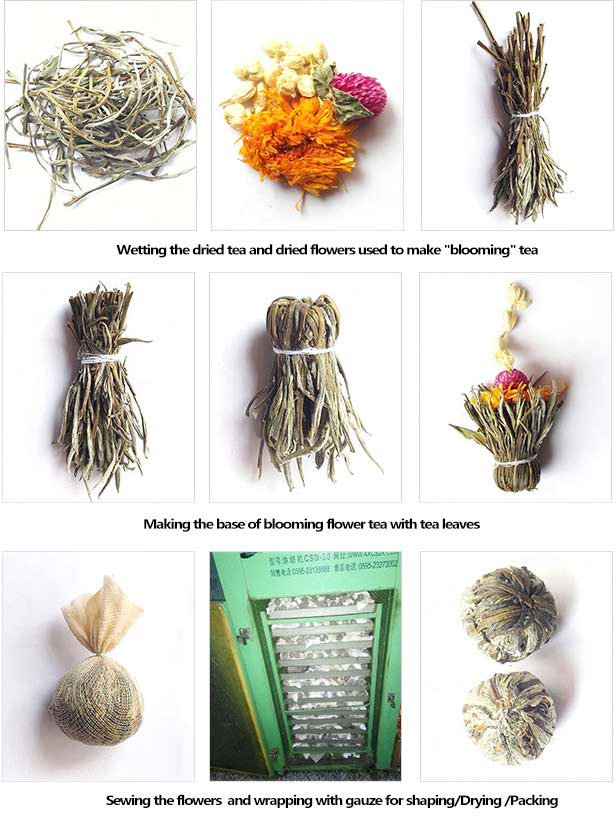
| How To Brew Blooming Tea | |
| Temperature | First infusion (100°C) / Second and infusion (85°C ) |
| Water | 350ml -500ml |
| Glass | Transparent glasses / Height ( > 10cm) / Diameter (> 7cm) |
| Time | 3-4 mins |


